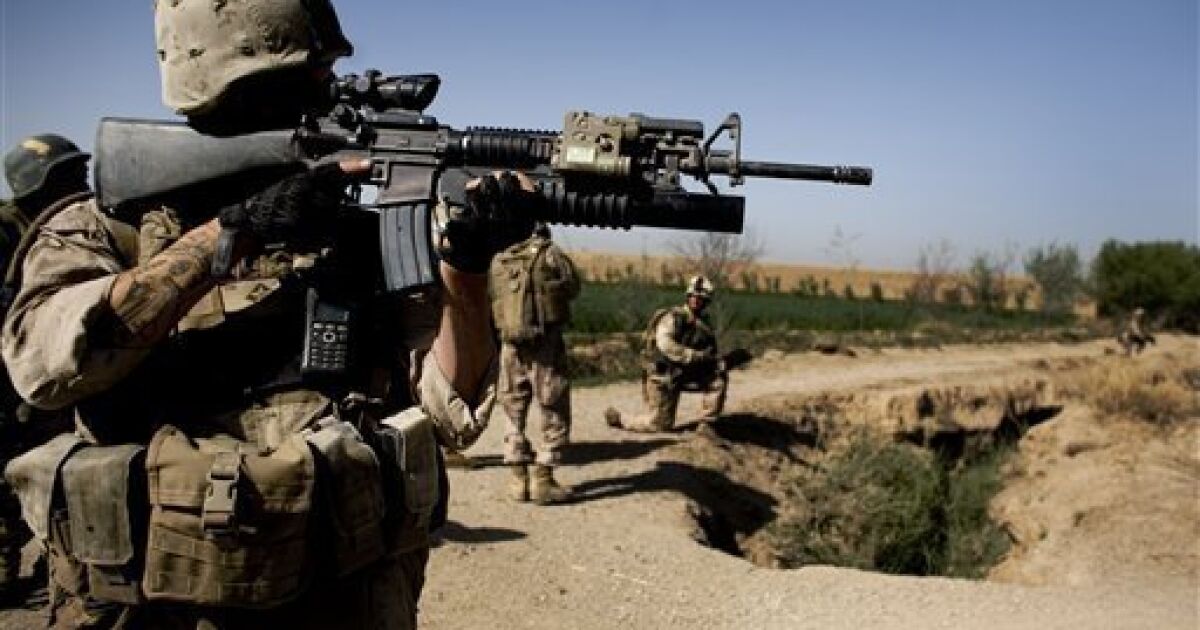- Apr 11, 2023
- 43,414
- 21,183
- 2,488
a .223 or a 5.56 are so fast it will drill you through
Follow along with the video below to see how to install our site as a web app on your home screen.
Note: This feature may not be available in some browsers.
"Required" doesn't enter into the exercising of a Constitutional right. I don't have to demonstrate a "need" to stand on a street corner or to hold up a sign and exercise my right to say that Joe Biden is senile, for just one example. I can do it simply because I want to. If I want to say it 30 times in rapid succession, I can without demonstrating a "need" to do it.In my opinion, it's not so much a question of the impact of the bullets (although, they are lethal and can cause significant damage at ranges of less than 50 yards), but rather the fact that you can throw 30 rounds downrange rather quickly. You can fire them as quickly as you can squeeze the trigger, and they hold a lot of ammo before needing to be reloaded.
Do you REALLY need something that can fire off 30 rounds in less than 30 seconds? If you say that you need it for hunting, then you are piss poor hunter. Most hunters I've known (and I'm one of them incidentally) take pride in the fact that they can bring down a deer or other animal in 1 shot. 2 if they've had a bad shot on the first one.
30 rounds isn't required.
The fact that trained police officers can fire 40 or 50 times at a suspect from less than 25 yards away and miss most of those shots tells you that shooting under stressful conditions, poor lighting, etc. is not the same as taking your time in a well-lighted shooting range and putting 5 shots in small circle on a target.For survival against violent criminals, more is better........you don't get to tell a man or a woman ....you only get 10 chances to save your family because I don't like you having more bullets.......
And if they miss vital organs can leave you mostly unscathed. Certainly not stop you if you are charging the shooter, intent on harming him/her.a .223 or a 5.56 are so fast it will drill you through
You ever seen a man hit in the torso with .223 or a 5.56? He goes down.
passing right through his targets. When the Sammies were close enough he could see when he hit them. . . . t was like sticking somebody with an ice pick. The bullet made a small, clean hole, and unless hit happened to hit the heart or spine, it wasn't enough to stop a man in his tracks. [The operator] felt like he had to hit a guy five or six times just to get his attention.
n 1980, I treated a soldier shot accidentally with an M16 M193 bullet from a distance of about ten feet. The bullet entered his left thigh and traveled obliquely upward. It exited after passing through about 11 inches of muscle. The man walked into my clinic with no limp whatsoever: the entrance and exit holes were about 4mm across, and punctate. X-ray films showed intact bones, no bullet fragments, and no evidence of significant tissue disruption caused by the bullet's temporary cavity. The bullet path passed well lateral to the femoral vessels. He was back on duty in a few days. Devastating? Hardly.

You ever seen a man hit in the torso with .223 or a 5.56? He goes down.
n 1980, I treated a soldier shot accidentally with an M16 M193 bullet from a distance of about ten feet. The bullet entered his left thigh and traveled obliquely upward. It exited after passing through about 11 inches of muscle. The man walked into my clinic with no limp whatsoever: the entrance and exit holes were about 4mm across, and punctate. X-ray films showed intact bones, no bullet fragments, and no evidence of significant tissue disruption caused by the bullet's temporary cavity. The bullet path passed well lateral to the femoral vessels. He was back on duty in a few days. Devastating? Hardly.
In Vietnam I saw a Gook get shot by a 5.56 in the right elbow. The bullet exited the left neck. Dead as a door knob.You ever seen a man hit in the torso with .223 or a 5.56? He goes down.
Your question is invalid; the Constitution protects my right to own and use such a weapon.Do you REALLY need something that can fire off 30 rounds in less than 30 seconds?